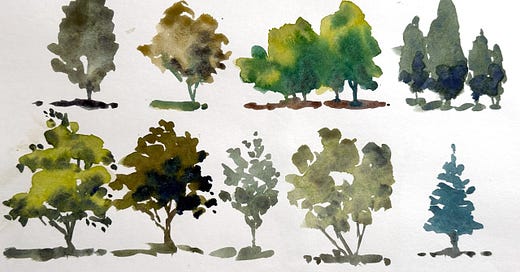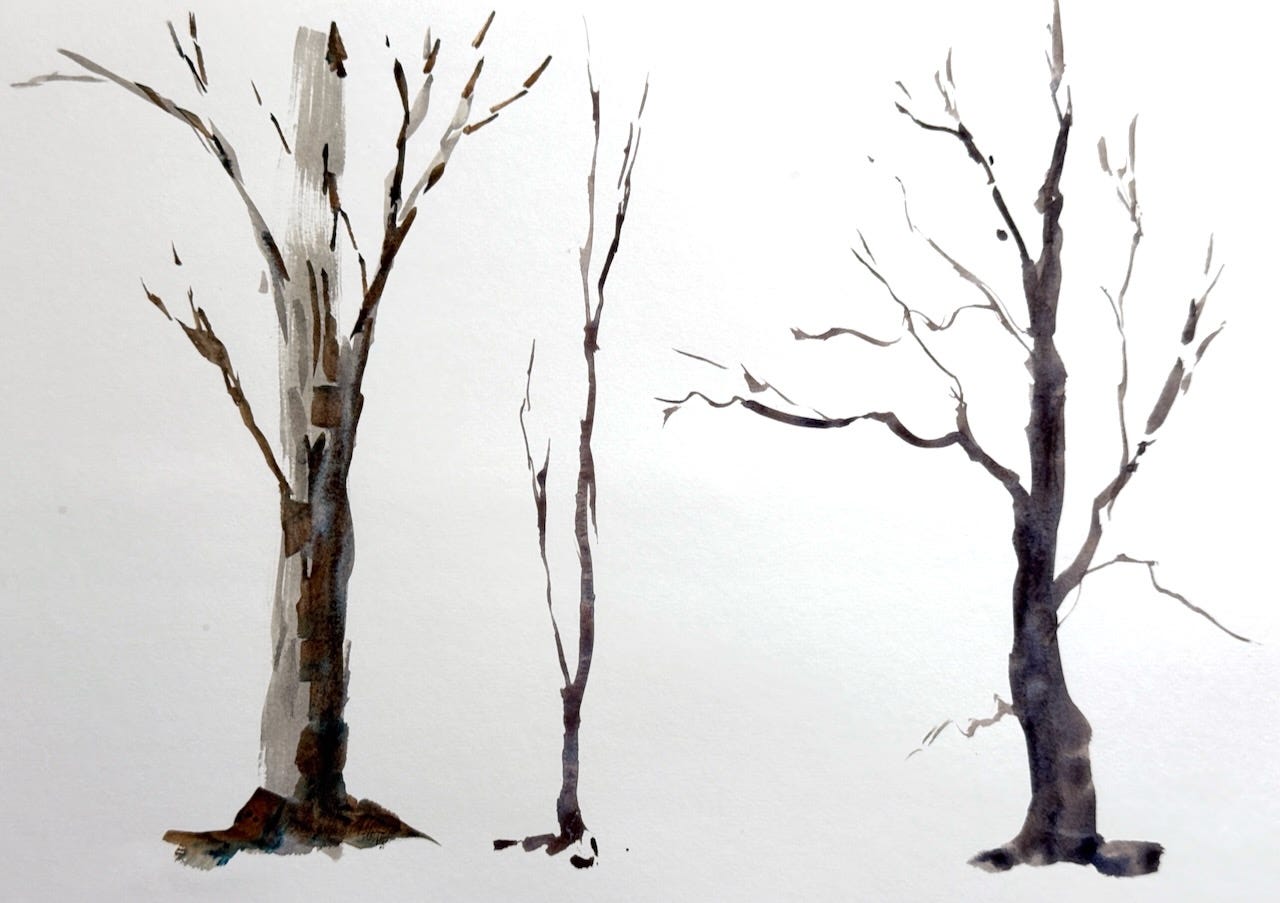First I’d like to say a massive thanks to you for being one of the 2,000+ subscribers. This is a crazy amount of people, and beyond my wildest expectations when I started this newsletter in January.
This week we’ll continue with trees—one of my favourite subjects to paint.
Also, I’m heading to Canberra later this week for my first-ever Plein Air Festival, so I needed a bit of tree practice to prepare.
Trees are a great subject, not just for their shapes and variety, but because they let us practice a bunch of core watercolour techniques: wet-in-wet, dry brush, calligraphic strokes, and thinking in terms of shape and volume.
They also come with a built-in challenge. Most of us carry around a “default tree” in our heads from childhood, and it’s easy to fall back on that symbol when we paint. The goal is to observe what’s really there—not just what we think a tree looks like.
Exercise 1: Tree silhouettes
Paint quick tree shapes, each with a different silhouette—round, columnar, flat-topped, irregular, umbrella-shaped, or whatever you like.
Use a big brush.
Keep it loose and fast—no detail.
Focus on the overall shape first, and start with the canopy. Then connect it to the trunk
These should read as tree types, not specific species. You're training your eye to simplify and vary your shapes.
Exercise 2: Trunks & branches
Skip the leaves and focus on the structure.
Choose one tree and paint just the trunk and branches.
Start at the bottom and paint upwards, just like a tree grows
Use a rigger for calligraphic lines
Notice how the branches divide and what direction they move in
Think about how the tree grows rather than just how it looks. This one’s especially useful for winter trees or when you want to suggest structure under foliage.
You can combine this exercise with the gradient approach from my previous workout
Tre Demo
In this Youtube video you’ll learn how to avoid “lollipop” trees and think in terms of shapes and volume
Why trees?
They let you practise core watercolour techniques—wet-in-wet, dry brush, calligraphic strokes—all in one subject.
They teach you to simplify complex shapes and suggest detail without overworking.
They challenge you to paint what you see, not the tree you’ve been drawing since primary school.
Premium extras this week:
Video demos of both exercises above
Bonus demo: Painting a Palm tree
Artist references for inspiration
Advance practice ideas
Keep reading with a 7-day free trial
Subscribe to Watercolour Workout to keep reading this post and get 7 days of free access to the full post archives.





